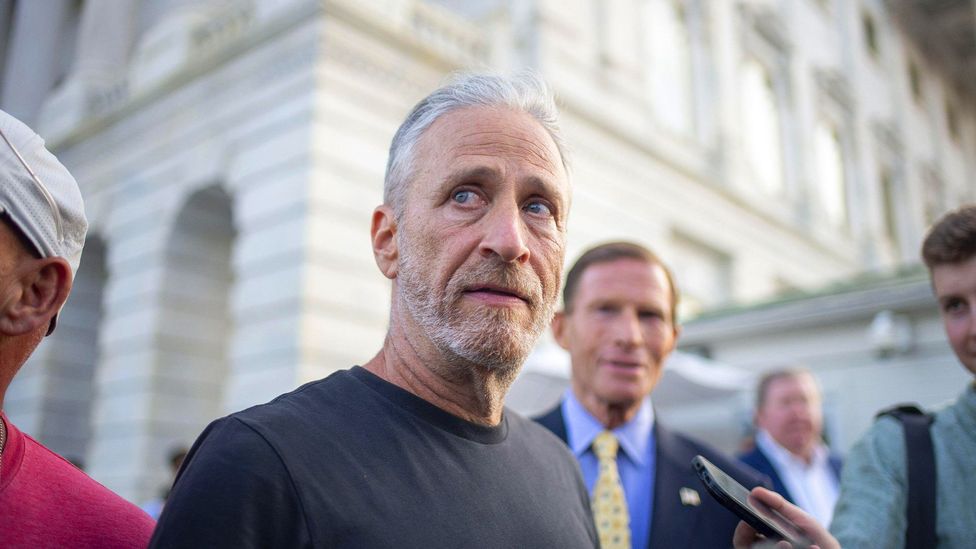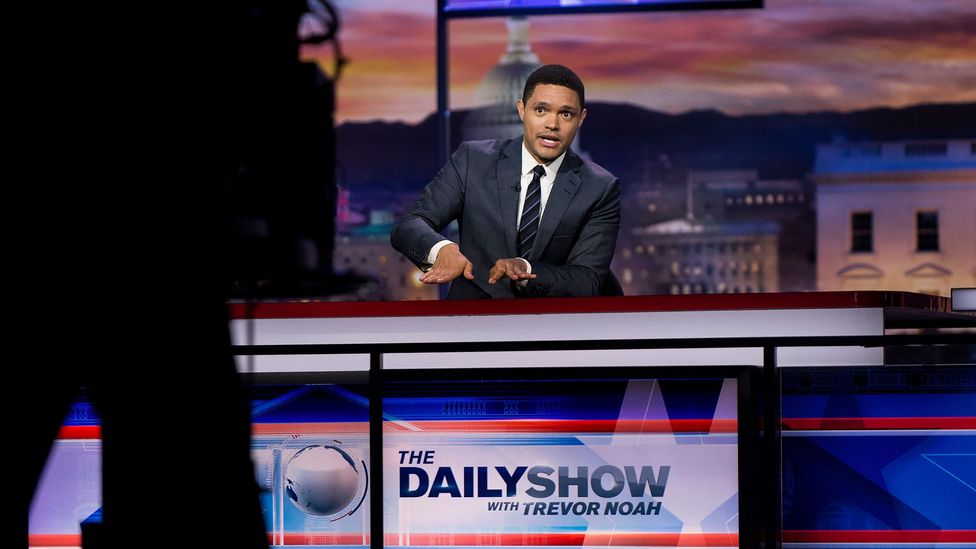Nearly 15 years ago, on 7 August 2015, Jon Stewart tearfully wrapped what was intended to be his final taping of The Daily Show by telling viewers: “Nothing ends… It’s a pause in the conversation. So, rather than saying goodbye or goodnight, I’m just gonna say I’m going to get a drink. And I’m sure I’ll see you guys before I leave.”
Stewart’s words turned out to be prescient. This week, amid much fanfare, the popular comedian returned to the helm of the Comedy Central show that he single-handedly turned into a cultural phenomenon during his initial run as host.
It’s a return that Stewart has said in interviews was driven by his desire to have someplace to “unload thoughts as we get into this election season”. And Stewart wasted no time picking up right where he left off nearly a decade ago, making clear that he remains the king of dissecting and distilling the latest political developments and gaffes with a unique brand of authenticity.
More like this:
Squid Game season 2: Everything we know so far
This is Me… Now: A Love Story: Why J-Lo deserves respect for her ‘bonkers’ new musical movie
The strange journey behind the TikTok duo replacing Lin Manuel Miranda for the Moana sequel
This time, however, Stewart will not remain in the host chair for a decade-plus as he did the first time around. The network has said that Stewart will make one-night-per-week appearances until the end of the 2024 election cycle – while also serving as the show’s executive producer.
The return of his incisive political and cultural skewering, however, is merely one of the takeaways from Stewart’s renewed presence on The Daily Show. TV critics say there’s far more that can be gleaned from the legendary comedian’s reprise.

Will Jon Stewart’s return increase interest in late night TV? (Credit: Alamy)
In the years since Stewart walked away from The Daily Show, the media landscape has changed and late night has struggled to hold onto viewers. With record numbers of people turning toward streaming or opting to watch clips on social media after a show has aired, advertising revenues for six of the top late-night shows has declined 50% since 2014 and more than 60% from their highs in 2016.
It’s also no secret that viewership for The Daily Show declined since Stewart’s departure amid this new dynamic. While his successor, South African comedian Trevor Noah, had a devoted following, the show didn’t have the same pull: During Stewart’s final season, The Daily Show garnered about 1.3 million viewers, according to the Associated Press. With Noah at the helm, the show averaged about 385,000 viewers.
While Stewart’s 2024 comeback is not likely to change the fractured media landscape, it may bring some renewed attention and buzz to the fading appeal of live late-night television.
“I think it provides a jolt of energy, publicity and interest for late-night TV,” said Kristen Baldwin, a television critic for Entertainment Weekly.
And that jolt of interest may not be a moment too soon for The Daily Show in a competitive media world offering a dizzying array of options from TikTok to Netflix and beyond. Marcus Collins, clinical assistant professor of marketing at the Ross School of Business, University of Michigan and author of For the Culture, suggests Stewart’s presence may bring some viewers back into the fold of watching live or cable television.
“Stewart’s return will likely be a shot of adrenaline to late-night TV, providing an appointment-based viewing occasion, if only for Monday nights, that linear television needs,” explained Collins. “There was a shrinkage in viewership for The Daily Show after Stewart left, but I imagine many of those people will come back.”
Why will they come back? Because, says Collins, Stewart offers something that’s been sorely lacking in the cultural zeitgeist: a unique brand of “sensible social and political commentary”. And Stewart is bringing this to the table amid a highly charged US presidential election year.
“Stewart provides a voice that, while strong in its convictions, has no problem critiquing both sides of the aisle and driving to the heart of the matter in ways that are both clever and clear,” explained Collins. “That’s super powerful stuff, and it’s a white space in linear late-night TV that’s totally unoccupied.”
If early numbers are any indication, Collins may be onto something. Stewart’s epic return on Monday attracted nearly two million total viewers across simulcasts, Paramount reported. That’s the show’s most-watched telecast in more than five years.
A more cost-effective late-night model
With high-paid marquee hosts such as Jimmy Fallon and Stephen Colbert, late night is expensive to produce. Estimates peg both Fallon’s and Colbert’s salaries at around $16 million and $15 million respectively, while Stewart was reportedly paid somewhere between $25 million and $30 million. Amid this reality, late-night offerings have shrunk. After James Corden left The Late Late Show with James Corden in 2023, for instance, CBS axed the show rather than find a replacement host.
But Stewart’s one-night-per-week return, which will include a rotating cast of other hosts the remainder of the week, may be an example or prototype for the late-night industry to follow. It offers a less expensive approach other shows could adopt and one that may be more intriguing for viewers.
“I think Stewart’s return will create inspiration for other late-night shows. He’s only on one day a week. That’s an interesting model for other shows,” said Collins. “Imagine if more networks programmed this way. It gives them the flexibility to partner with unbelievable talent without a huge investment from either side.”
In other words, you get both novelty and familiarity at the same time, says Collins, who suggests this approach may signal for other networks some of the creative possibilities available.

The Daily Show struggled to find a replacement for Trevor Noah.(Credit: Alamy)
Much like the criticism being leveled at the two primary US political parties these days, the comedy world may be suffering from a similar “men we’ve seen before” talent challenge. Stewart’s return to The Daily Show may offer some evidence of that.
Noah, who was Stewart’s replacement at the show’s helm, left the post in 2022. Since then, The Daily Show has struggled to find a suitable successor. Nearly a year after Noah’s departure, there was still no plan in place for a new host.
“What this kind of proves, is that the TV industry hasn’t done a great job of nurturing the next generation of talent,” said Baldwin. “I think the fact that The Daily Show has yet to find a permanent host is just another indication of that.”
The fact that he’s not a fresh talent entering the fray is not lost on Stewart himself. During his opening monologue Monday night, the 61-year-old joked about his age and the parallels between his return to The Daily Show host desk and the current US presidential election candidates vying to occupy the White House.
Stewart invited the cameras to zoom in on his face during the monologue in order to provide viewers a close-up of his wrinkles and how he’s aged over the years. And then further emphasised his age by offering up a fresh-faced picture of him taken 20 years ago.
But Lara Rosales, critic for Tell-Tale TV, says that while Stewart may not be a new commodity, he offers something that some feel has been lacking on late-night television – and may just help fill the void until the next generation of comedic talent emerges.
“He brings a different vibe. He is more irreverent, in a sense. He has no filters. That attracts a different kind of audience, who is looking for something more real,” Rosales said. “I don’t think it’s going to be difficult for him to fall back into captivating the audiences the way he used to.”
If you liked this story, sign up for The Essential List newsletter – a handpicked selection of features, videos and can’t-miss news delivered to your inbox every Friday.